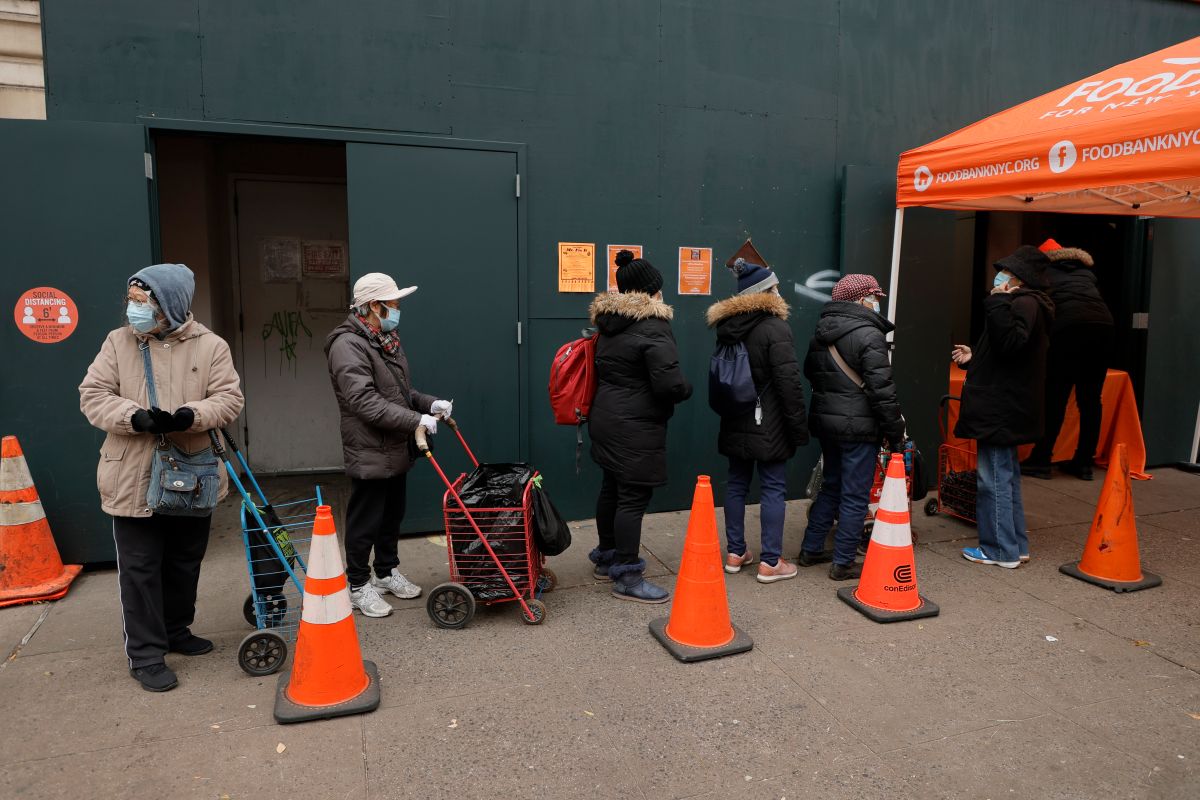NEW YORK – This Wednesday, March 1, the reduction in emergency funds due to the pandemic in SNAP food stamps (Supplemental Nutrition Assistance Program) goes into effect in 32 states of the United States, Washington DC, Guam and the Virgin Islands.
The allocation was approved in 2020 in Congressthrough of the Families First Coronavirus Response Act. The measure provided a minimum of an additional $95 per month.
Last December, the omnibus or federal spending law for fiscal year 2023 ended the emergency stipend.
Starting this month, the beneficiaries will receive the regular amount that was transferred to them before the statute was passed, reported the United States Department of Agriculture (USDA), the entity in charge of managing and distributing these funds.
Some 42.3 million Americans receive SNAP.
According to a report from the Center on Budget and Policy Priorities, the average SNAP benefit per person is $121 per month, or almost $4 per day per recipient.
The maximum monthly benefit for an individual in fiscal year 2023 is estimated at $281, while the average benefit for the same period is estimated at $197. The entity also calculates that beneficiary families spend 30% of their net income on food.
Food banks anticipate more visits to their US centers.
Food banks throughout the United States that distribute these products free of charge to people in need anticipate an increase in orders and the arrival of more individuals and families at their facilities.
“Not everyone is following the news closely and the first instance they will find out about the reduction is when they see what they got on the check,” said Radha Muthiah, president of Capital Area Food Bank in Washington DC.
“So this is my biggest fear, that it’s going to hit people all of a sudden and they’re going to be shocked,” he told the BBC.
The Greater Chicago Food Depository network served 24% more people in January than on the same date a year ago. Even with the temporary emergency funds from SNAP, food banks have seen an increase in applications during the pandemic. Added to the above is the problem of inflation that has skyrocketed the cost of food, among other products and services.
In the case of Food Banks for NYC, the entity reported an 80% increase in visits to its network of 800 food pantries and community kitchens.
Organizations are trying to target SNAP participants. Among other things, they are asking beneficiaries to document and report changes in their financial situation that may affect their benefits when they renew.
“You could argue even before the pandemic hit that we were going through a hunger crisis,” said Man-Yee Lee of the Greater Chicago Food Depository. “At a time when food prices are high, it’s a terrible time to reverse these benefits,” he said.
It may interest you:
Social Security recipients will also feel the impact of the reduction in SNAP food stamps
